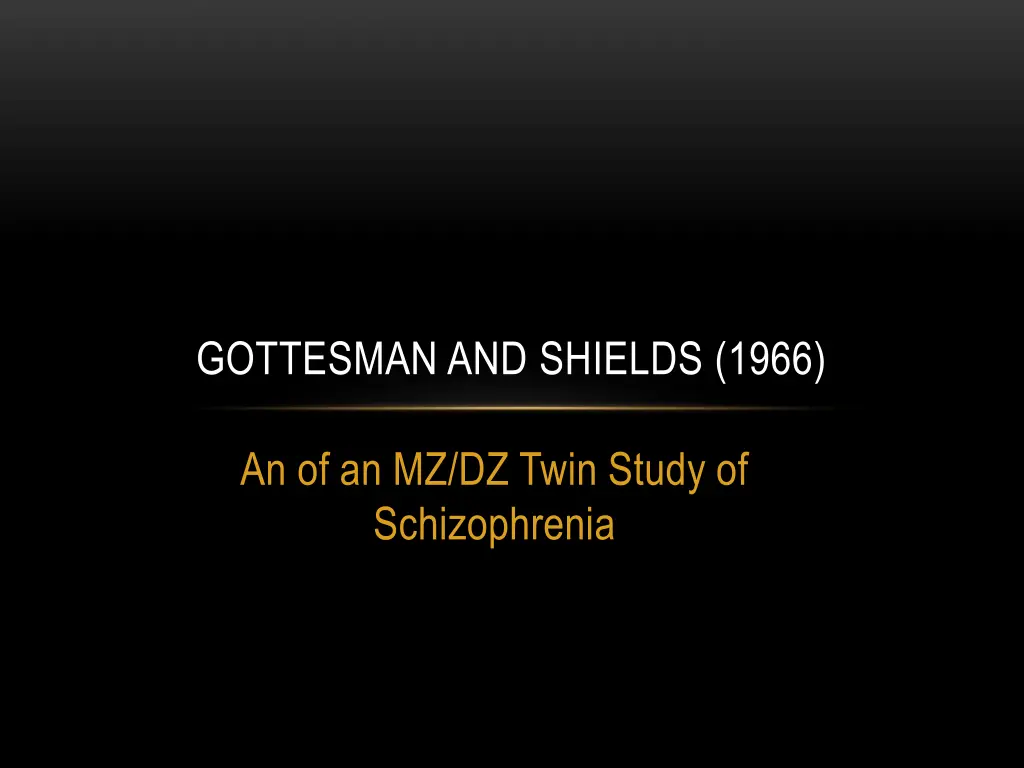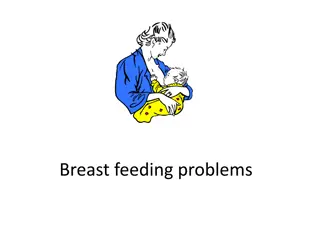
Twin Study of Schizophrenia: Gottesman and Shields 1966
Explore the heritability of schizophrenia through a comprehensive MZ/DZ twin study conducted by Gottesman and Shields in 1966. The study compared concordance rates between monozygotic and dizygotic twin pairs to understand the genetic influence on schizophrenia and other psychiatric disorders. Primary and secondary data collection methods were employed to examine the prevalence of schizophrenia and associated factors among same-sex twins. Gender differences and concordance rates in severe cases were also noted in the findings.
Download Presentation

Please find below an Image/Link to download the presentation.
The content on the website is provided AS IS for your information and personal use only. It may not be sold, licensed, or shared on other websites without obtaining consent from the author. If you encounter any issues during the download, it is possible that the publisher has removed the file from their server.
You are allowed to download the files provided on this website for personal or commercial use, subject to the condition that they are used lawfully. All files are the property of their respective owners.
The content on the website is provided AS IS for your information and personal use only. It may not be sold, licensed, or shared on other websites without obtaining consent from the author.
E N D
Presentation Transcript
GOTTESMAN AND SHIELDS (1966) An of an MZ/DZ Twin Study of Schizophrenia
AIM To explore the extent to which schizophrenia is a heritable condition, comparing concordance rates for MZ and DZ twin pairs, where one of the twins already has a diagnosis of schizophrenia To explore the extent to which the co- twin of individuals with schizophrenia suffer from other psychiatric disorders or at least form some psychological abnormality, and to see whether this varies between MZ and DZ twin pairs
PROCEDURE: COLLECTING SECONDARY DATA Hospital records - 16 years, Maudsley and Bethlem Royal Joint Hospital (London) 392 patients were same-sex twins; 47 of which had been diagnosed with schizophrenia The researchers also identified some more twin pairs, where the patients had left the hospital but subsequently been diagnosed with schizophrenia Final ample comprised: 57 twin pairs in total: 24 MZ and 33 DZ pairs 31 of each gender; aged between 19-64, mean average 37 6 extra twin pairs not allowed in sample; 3 from overseas (might have invalidated the diagnoses of schizophrenia), three more with unclear zygocity Further secondary data was collected using the hospital records of the twins to find out about their case histories and identify references to diagnoses of schizophrenia
PROCEDURE: COLLECTION OF PRIMARY DATA Researchers conducted semi- structured interviews from which verbal behaviour was analyzed, personality test and tests of thought disorder. Validity of MZ/DZ diagnosis: Blood tests, fingerprint analysis, assessment of physical resemblance used to assess zygocity
FINDINGS MZ(%) 42 54 DZ(%) 9 18 Both schizophrenic Co-twin either schizophrenic or has another clinical disorder Co-twin either schizophrenic, has another clinical disorder or is psychiatrically abnormal One twin has schizophrenia and the other is normal 79 45 21 55
MORE FINDINGS Researchers found a gender difference; concordance rates were slightly higher for females compared with males, but sample size very small In the most severe cases of schizophrenia, the concordance rate was much higher, between 75% and 91% in MZs but only 22% for DZs.
CONCLUSION Genes appear to play an important role in schizophrenia because the concordance rate is higher in MZ twins than DZ twins. However environmental factors must also be important Gottesman and Shields (1966) support a diathesis- stress model of schizophrenia where by a predisposition is inherited but is only triggered under certain environmental circumstances; They also believed that certain types of schizophrenia may have a greater environmental component; this conclusion is based on the fact that in 21% of MZ twin pairs, one had schizophrenia yet the other was absolutely fine despite sharing the exact same DNA.
FURTHER CONCLUSIONS further research needs to be conducted on MZ twin pairs where one has no psychological abnormality whatsoever G and S believed that the initial diagnosis of schizophrenia may have been inaccurate the lack of diagnosis of disorder in the co-twin was inaccurate the co-twin may be yet to display symptoms environmental triggers might have caused one twin to manifest schizophrenic symptoms and the other to be protected






















